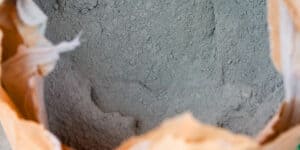Let’s try to better understand the Green Star project sustainability rating system, from a supplier’s point of view! With a broad view of ecolabelling, and what Markham has been achieving in this area.
MARKHAM & Green Star

Invisible Strength
MARKHAM & Green Star
/
RSS Feed
MARKHAM & Green Star
Green Building Council Australia new.gbca.org.au and New Zealand nzgbc.org.nz
Environmental Choice New Zealand environmentalchoice.org.nz
Ecolabelling en.wikipedia.org/wiki/Ecolabel
MARKHAM Sustainability Statement markhamglobal.com/markham-videos/markham-environmental-and-sustainability-statement
Header photo by Nick Fewings on Unsplash
View the Transcript
ABBEY: Hello and welcome everyone, to the latest podcast segment in MARKHAM’s Invisible Strength series! Today we’re going to talk about a very hot topic in the construction industry – which is the Green Star ratings – and how MARKHAM is approaching this.
I’m Abbey, and I’m based in the Napier office; I’m based in support across several layers here; and joining me is Hayden, the Sales and Marketing Manager, here in Napier. Hayden, can you introduce yourself?
HAYDEN: Cheers, Abbey! Thanks for that, thanks for the intro. And by the way, it’s good to have you on board with MARKHAM! Abbey has recently joined us, she’s a great part of the team. So yes, as she just said, I’m Hayden Prestidge, based in the Napier office but work across New Zealand and Australian projects with the team sales and marketing divisions.
So, where are we? To be honest, it’s taken me a little bit to get my head around this Green Star topic and how it actually works in New Zealand and Australia, and if there’s others out there who feel the same, anyone that’s listening, I feel for you! It’s a big topic, and you may find something out of today’s session helpful.
I’ll chuck a disclaimer out there: we’re not experts in this field at all, but just want to share some things that we’ve picked up along our journey. Of course, we’re suppliers to the industry, and that’s the angle, the perspective we’re coming from. So if you need specific answers to specific questions to your own … everything’s unique – about your own specific business, I highly recommend you get in touch with a Green Star consultant or someone who specializes in this field.
Back to you, Abbey – tell us what Green Star actually is? What is Green Star?
ABBEY: The Green Star ratings in Australia and New Zealand are administered by the Green Building Council of each country. The Green Star rating system assesses the sustainability of projects at all stages of the build. New Zealand’s Green Building Council website says Green Star is Australasia’s largest voluntary and truly holistic sustainability rating system for buildings, fitouts and communities. So that’s cool.
Basically, there are 6 [star] ratings, and in my opinion, one through three [star ratings] doesn’t really apply in this context. But the third star comes in as an expected baseline, which is Good Practice. Four-star is Best Practice and is where the industry really starts considering the rating at all. Five-Star is National Excellence, and six-star is World Leadership. I think there are less than 50 projects in Australia on the boil at the moment that actually have the six-star rating.
Have I missed anything?
HAYDEN: Have you missed anything? Oh bound to have, but that’s all good! Likewise with me. Thanks for that, that’s good. I just want to pick up on a couple of things you said there. It’s important to understand what you said about Green Star relating to the whole project. When we say projects, it may be a fitout, or a refurb or a rebuild, or a single development or a whole community, or whatever it is. But it’s not just individual products, it’s not just individual systems that make up that building. It’s really … it contributes to the confusion, I guess, when people say their products are Green Star rated – there’s no such thing, from that point of view, as a Green Star rated product. There’s a recognition for Green Star, but you can’t have a Green Star product.
So when a designer, or a developer, or whoever is working to achieve a Green Star rating for a project or development, they will look and select systems, solutions, approaches, and whole methodologies, that are going to help achieve that outcome. So that might only be the products themselves, but it might be the build process, or whatever it is that has recognized ratings. So broadly, they’re looking for ways to achieve credits towards that rating. Every system, product, offers credits, and that builds up to get five-star, six-star ratings. So, what is going to help the project’s sustainability, and minimize its impact, is going to be looked at. So, you know, are the products recognized to do that?
Does that sort of make sense?
ABBEY: Yes! So what does that kind of mean for the product suppliers? How can we prove that our products or services will minimize that impact – well, to prove to the satisfaction of everyone that’s involved in the project?
HAYDEN: Well I guess … what has emerged over recent years is the principle of ecolabelling. You may have heard it spoken about in the industry, ecolabelling. It’s basically voluntary by a supplier, and of course its validity is based on the trustworthiness of a certifying body. So there are accredited certifying bodies that will run you through this.
But a satisfactory ecolabel will prove to the construction designer, or whoever, that the product is indeed minimizing environmental impact, or maximizing sustainability, over the life of the building; and therefore it’s suitable for use on a Green Star project.
So that’s quite a broad brush over… quite a high-level summary. If you want a quick summary, you could probably look on Google, or something, for the history of ecolabelling!
ABBEY: OK, so what we’re building up to here, is what MARKHAM has done in this space; and I know that the management team here have been really excited about the announcement that we achieved the ecolabelling license. Can you give us some detail on that? – About the certifying body that issued it?
HAYDEN: Cool, yes. MARKHAM as a whole – and our vision probably says it as well, “Saving the World, One Concrete Structure at a Time”; we’ve always been leaning towards sustainability. It’s a big part of us, and who we are. A big part of us is wanting to drive that sustainable option right from day one; making concrete last longer; you know, not having to re-build; not having to re-use cement; these sorts of things. And the majority of our concrete treatments, also, have nil impact on the environment, they’re nil-VOC, so nothing volatile in them; and even potable water friendly, things like that. It has always been a big topic for us.
But of late, I guess, it become obvious that we needed to take it to that next level, in achieving an ecolabel; in achieving something that’s recognized in the industry. It’s definitely been quite a big process to get to that. Actually, going through the process is not unlike going through something like ISO, you know; something recognized, where you’ve got to have documentation, you’ve got to have systems in place; and there are a lot of details which aren’t obvious on the surface.
So we’ve had audits, and then 7 products licensed by Environmental Choice New Zealand. Now, ECNZ is owned by the New Zealand government’s Ministry for the Environment, so that’s set up to be that certifying body to provide that ecolabelling.
So the cool thing about that certifying body is, not only are we valid in New Zealand, but in the category we fall under, which is paints, funny enough because there’s no category for concrete [treatments] really! – is also accepted by Australia’s Green Building Council. So that’s a big step forward for us. So right through Australasia, we are recognized by the Green Building Councils. So it’s a big step forward, for any Green Star project, wherever it’s located.
I’d like to emphasize, I guess, that it’s not just a matter of the product itself. So if you’re going to go for Green Star, have all your processes in order. As a company, you should be driving for energy management. What are you doing that’s sustainable? What are you doing for recycling? Your waste? Your management? Things like this. These points are really strong, and just as much in audit and the process as what’s in the actual products themselves. You know, what’s the manufacturing process? How is it being applied? – all those sorts of things.
So it’s good to work through. It took a long road, but it’s good to work through the process.
ABBEY: Cool! So construction designers can actually select these products with confidence, for inclusion in their Green Star design. Cool!
HAYDEN: Yes, 100%. And we’re working on growing the list. As I said we’ve got seven of our products now, seven of our key products. So that comes down to, like, even waterproofing of concrete, you know, you can do with Green Star backing, so to speak, a recognized system for that.
But if you want to know more about an individual product, I’d say definitely get in touch with us. Our contact details are on the website, markhamglobal.com; or any of our friendly team, if you’ve got them on LinkedIn or email, fire through a note. Or come back to this podcast … surely you can make an entry through there somehow!
ABBEY: Yes, well, that’s been really interesting, actually. Thanks for going over all the details with me, I’m sure I understand the process, and hopefully, it’s been useful for our listeners as well.
And to all our listeners – thanks for tuning in this time, and don’t miss out on our next episode!
Want to Contribute?
Feedback on our podcasts? Suggestions for future topics? Looking for more information on topics we’ve discussed? Send us a message – we’ll be in touch within a day or two.
More about MARKHAM
MARKHAM are dedicated to providing innovations for concrete and construction. Focusing on concrete waterproofing solutions, penetrating concrete sealers and durability treatments for concrete.
Podcast Categories
Menu
Latest Episodes

The Electric Vehicle of Cement Making
We’ve talked about this in other places, but cement manufacturing is a real problem child

Eco Choice – People and Planet Focus
Environmental Choice New Zealand has had a makeover – now it’s called Eco Choice Aotearoa.

Starting Good Conversations
Have you seen those colourful Trademutt shirts on site? They’re a conversation starter! This is
invisible strength podcast
The whole MARKHAM team is pleased to present you with our podcast series, INVISIBLE STRENGTH. In this series of interviews, we’ll walk through the science and challenges of concrete durability, what goes wrong in the field – and the advanced methods available to restore and enhance service life to concrete construction.
INVISIBLE STRENGTH reflects a number of factors in concrete construction and durability. When things go wrong, the evidence can become very visible indeed. However, when all is going well, there’s nothing particular to be seen!
MARKHAM’s concrete treatments, too, are invisible once completed – and the result is the long internal, invisible durability of the concrete.
So join us as we explore the unseen world inside concrete – why it matters, and how it can be protected!
Stay Connected
Listen and subscribe to us on your favourite podcast platform, we're always adding new episodes!
Invisible Strength – The media site for MARKHAM – Adding Life to Concrete.
At MARKHAM, we’re on a mission to transform concrete and construction. Our Purpose? ADDING LIFE TO CONCRETE.
From innovative waterproofing solutions to penetrating hardeners and sealers, our focus is clear: to reinforce concrete structures and make them withstand the test of time.
Newsletter
Sign up for email updates on the latest collections, campaigns and videos.

